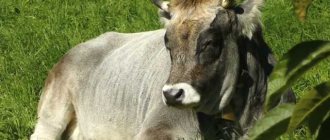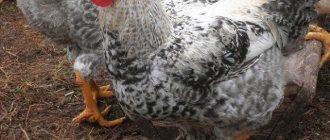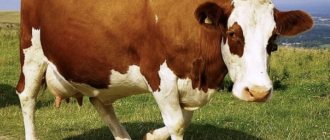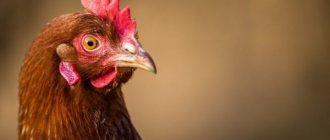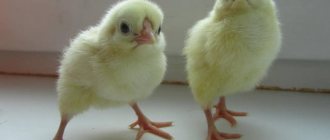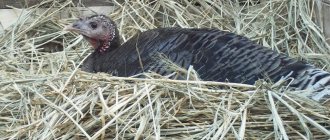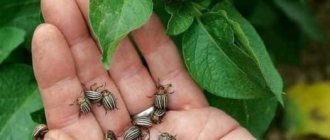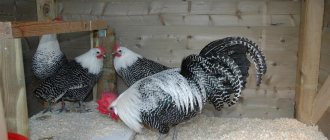Content
For day-old Big-6 turkey poults, brooders are prepared (special boxes with lighting and heating), which are placed in clean rooms with good ventilation.
For 20 turkey poults, the dimensions of the box should be 70 cm by 120 cm. In such a brooder, young animals are kept until one month of age, then transferred to cages or to the floor. The temperature on the first day after the birth of the chicks is maintained at +33 degrees. By 15 days it is gradually reduced, bringing it to +25 ℃. At 8–10 weeks, turkeys feel great at +20 degrees.
At the age of 2.5–3 months, young animals can be released outside if the air temperature does not drop below +18 degrees. Turkeys are kept in a spacious enclosure, provided with plenty of fresh grass. If there is a clean and dry meadow with tender vegetation near the farm, the young animals are released to graze. To prevent the birds from running away, light mesh mobile enclosures are built. As the vegetation is eaten, the pen along with the turkey poults is moved to a new location.
When keeping Bigs indoors, chicks are placed 2 pieces per 1 square meter. m, reducing this number to 1 bird by 4 months of age. Small wood shavings or wood chips are used as bedding. Small sawdust is not suitable as it generates a lot of dust.
Round-the-clock lighting for newborns begins to be reduced from 10 days of age. By 3–4 months, the duration of daylight hours should be 12–14 hours.
The air humidity in the room with turkeys is 60–65%. Air purity is maintained through forced ventilation, eliminating drafts.
In the room where the young Bigov are kept, it is necessary to install troughs for wet mash, herbs and vegetables and bunker feeders for dry feed. Water is poured into vacuum or nipple drinkers.
Perches for fattening young animals are not necessary. For adult birds, wide, planed bars with a cross-section of 7 by 5 cm are installed. A perch length of 40 cm is provided for each individual.
In a poultry house or pen, containers are installed in which sand and ash are mixed in equal parts. In these baths, birds clean their feathers from parasites.
To successfully raise young Big-6 turkeys, you must follow these rules:
- keep the chicks' paws warm and dry;
- monitor the cleanliness of the litter and air;
- exclude contact of turkey poults with other birds, at least until 8 weeks;
- provide the livestock with nutritious feed.
You can graze Big 6 turkeys after the grass has dried from the dew. After rain, the birds are not allowed to walk.
Turkey room
The conditions for arranging the place depend on the chosen placement method: in a cage or in a poultry house.
Cellular content
Cages for breeding turkey poults can be bought in specialized stores, or you can make them yourself. In the latter case, the size of the cell cell should be 16x16 mm or 24x24 mm, and up to 50 cm in height. This house is good for housing chicks up to 10 days old. The heating system can be organized using infrared lamps.
Considering the small size of turkey chicks, it is not recommended for chicks to be on a mesh floor during the first 3 days of life.
Rules for organizing cellular space:
- Feeders should be placed behind the cage: this will help avoid scattering and trampling of food. It is advisable to purchase a groove feeder with a 2-centimeter side.
- The vacuum drinker can be replaced with a nipple drinker, since the water supply in the latter option is dosed. In addition, in such a tank the water will not stagnate, and, accordingly, harmful microorganisms will not develop.
- To maintain cleanliness in the cage, it is recommended to install a mesh floor with a tray for litter, which should be cleaned 2 times a day.
- After a few months, a hard floor will need to be installed. This measure is necessary in order to avoid the appearance of namins in the chest area, which negatively affect the presentation of the carcasses. Softwood shavings or fresh straw can be used to provide a hard surface. The bedding layer should be at least 15 cm from the dry floor covered with slaked lime. It should be changed once a week. You can also use a combined flooring option: 2/3 of the area should be made of planks, and the remaining part should be covered with deep flooring.
Poultry house arrangement
It is enough to follow simple rules to properly organize the space:
- Since birds react poorly to damp air, the room should be dry. On average, one turkey needs 1 square meter of space.
- Windows in the turkey house should make up 1/10 of the total floor area.
- It is better to place perches at the same level: this will help avoid competition for places and prevent droppings from falling on birds sitting on lower tiers. The crossbars should be 60 cm apart and located 80 cm from the floor. Perches are usually made from beams 7 cm wide and 10 cm long. Under the perches it is necessary to place retractable trays for collecting garbage. The number of nests is calculated as follows: at least 1 nest is required for 5 birds.
- Near the perches or in the walking area in the warm season, you should definitely pour a mixture of sand and ash: taking such unusual baths will help the birds get rid of parasitic insects.
It is advisable to install feeders of such a size that all birds can freely reach them at the same time. It is better not to feed turkeys food scattered on the floor: birds are farsighted, and often see only those objects that are at a great distance from them. As a rule, they do not notice what is “under the beak”.
Feeding from the third to the tenth day of life
Turkey poults of this age, with normal feeding, should weigh 60-70 grams. In order for them to grow well, the most optimal feeding composition (in percentage) will be:
- wheat flour - 60%
- ground dried corn – 10%
- fresh finely chopped greens - 10%
- fresh cottage cheese - 8%
- fine wheat bran, hard-boiled eggs – 10%;
- chalk, crushed shells – 2%.
A wet mixture is prepared from all the components, which is fed to turkey poults. During the same period, fresh greens are introduced into the diet: onions, alfalfa, nettles. Onions are fed only during the daytime, as they promote thirst in birds. The ratio of greens and mixture of components should be one to one.
How to care for chicks?
Nursing turkey chicks is the most crucial moment, so it is very important to create all the necessary conditions for the chicks. The main requirements during this period: temperature +35...+37°C and dryness, since diseases can develop in dampness
Grandfather’s turkey poults are kept in a special structure, like an aquarium without a lid, over which an infrared lamp works around the clock to maintain the necessary conditions. Since it is too cold outside at this time, small turkey poults have to be kept indoors. The chicks are kept in such conditions for a month.
The main nutrition of turkey poults in the first month of life: specialized starter feed. From the third day you can enrich your diet with boiled fish and various herbs: nettles, green onions, garlic leaves.
After a month, the turkey poults move outside. First, a pen is built for them, like a small greenhouse with a roof. And after they are fully strengthened and grown, the young animals are transferred to a spacious enclosure.
Classification of bird breeds by weight
Domestic turkeys are divided into three main crosses. The main criterion for difference is the maximum weight that an adult male or female gains upon reaching sexual maturity. However, each cross has its own distinctive features from the others.
Light cross - decorative turkeys
This category includes the smallest birds. It is almost impossible to meet representatives of light crosses at poultry farms or home farms. The weight of such birds does not exceed five to seven kilograms. A striking representative of the breed is the blue, or as it is also called, slate turkey.
Birds are most often bred for beauty, for example, in parks or zoos. Blue turkeys are distinguished by their exotic plumage. The feather is bright, with blue and sky-azure tints. Birds cannot reproduce naturally, and they also often get sick. These types of crosses are not suitable for growing for meat.
Meat breeds
Almost all representatives of heavy crosses and most of the breeds of medium crosses can be safely classified as meat breeds of birds. Medium crosses reach smaller sizes than broiler types. Adult males weigh between nine and fifteen kilograms depending on the breed.
Females are a little lighter. Due to the fact that the weight of the male is not much greater than the weight of the female, medium-cross turkeys do not experience difficulties during reproduction. After all, males cannot seriously injure or injure females.
Despite the fact that turkeys of these breeds have many advantages, it is difficult to call them popular on private farms. The fact is that their rate of weight gain is slower than that of broiler breeds. In addition, they weigh less than meat breeds. Broiler turkey varieties are very popular when it comes to raising birds on an industrial scale.
Prominent representatives of heavy cross breeds are the Big-6 breed, Canadian white and bronze turkeys. Distinctive features of these species are a massive chest, large legs, widely spaced and muscular.
Such large breeds are extremely marketable for breeding for meat sale. However, breeds have their drawbacks. Broiler turkeys are a product of artificial crossing; they do not have high enough immunity and are susceptible to many diseases.
The solution would be to give the chicks all the necessary vaccines, as well as carefully monitor the health of the birds.
The birds are quite large, so it is important to comply with the planting standards in the poultry house, otherwise crowding and crushing cannot be avoided. Another disadvantage is that males weigh almost twice as much as females.
Taking this fact into account, one should not be surprised that individuals cannot reproduce on their own; outside help will be needed. Males are also extremely aggressive during the mating period.
Care must be taken that they do not injure themselves or the females.
How is weight determined?
To determine how much a turkey carcass weighs, several methods are used. The easiest method is to weigh the turkey on a scale, either a scale or a spring scale. If spring weights are used, the bird must be placed upside down in a special box.
The advantage of a tithe scale is that it can weigh several turkeys at the same time.
If you don’t have scales, easy methods using available tools will help you determine your weight. Chicks are usually weighed in a special gauze bag. If you don’t have one, you can place the turkey in a sock or bag, as long as there are holes for the paws and the head.
Additional Information! Only electronic scales will help you find out the exact weight of an adult or small animal.
Weight gain of turkey poults
Farmers who commercially raise turkeys for meat take a very responsible approach to the issue of weight gain. The daily increase depends on the age of the individuals; by 6 months, most breeds gain maximum weight and are ready for slaughter. Chicks are weighed every week. A one-month-old chicken that has not matured in accordance with the table indicator is resettled for fattening. The daily increase should be in accordance with the norm from 47 to 53 grams. The figure varies depending on age, for example, chicks up to three days old weigh about 50 grams, so that they quickly gain strength, the feeding regime is 8 times a day.
Each turkey poult receives 120 grams of feed per month, and the carcass already weighs at least 1.3 kg. The amount of feed is gradually increased; by the end of the first month, the diet should be 3 times more than the original. The daily gain by day 21 should be at least 75 grams. If the farmer does everything correctly, then after 5 weeks the turkey should weigh about two kilograms, and by the 7th week - 4 kg. Every day the weight grows by 70–80 g. At the end of 2 months, when weighing a live carcass on the scales, there should be 5 kg, while the daily norm for each individual is 300 g.
You can see the table on the North Caucasian white breed of turkeys.
From birth, turkey poults need to consume the required amount of nutrients, the availability of fresh water is important, and they also need gravel for the proper functioning of the crop. Turkeys are fed grain legumes (buckwheat, oats)
Cake and meal are also important to include in the diet, as they contain amino acids. Animal proteins, calcium and phosphorus are found in fish and meat flour. Strict control over the diet is not required, since turkeys are unpretentious
Turkeys are fed grain legumes (buckwheat, oats)
Cake and meal are also important to include in the diet, as they contain amino acids. Animal proteins, calcium and phosphorus are found in fish and meat meal
Strict control over the diet is not required, since turkeys are unpretentious.
How much does a turkey weigh? Females weigh on average 9-11 kg, males - 11-19 kg, depending on the breed.
During the first week, the turkey grows slowly, from the second week it actively gains weight, and by the end of growth, the weight of turkeys increases 200 times in females and 800 times in males. Maximum weight gain is observed at the age of 2-3 weeks, then gradually decreases.
How to feed turkey poults so that they grow well and gain weight
Feeding newly born babies should be given special attention. The diet can be compiled in accordance with the recommendations given:
| day of life | Products that can be included in the daily menu |
| 1 |
|
| 2 |
|
| 3–10 |
|
| after 11 |
|
Important! When planning broiler breeding, you should focus on feed consumption indicators. So, for 1 individual per month you will need to use about 29–34 kg of feed.
So, keeping turkeys is a fairly profitable business, since this bird is capable of gaining a lot of weight in a short time of keeping, its meat has dietary properties and is highly valued. The weight gain of birds depends on many factors. First of all, they need comfortable conditions in the poultry house and a properly balanced diet.
Possible diseases
During the time it takes for turkey poults to reach slaughter age, chicks can suffer from viruses and infections. Chicks have weak immunity; some pathogens can destroy the entire flock. Common diseases:
- Newcastle disease - vaccination is carried out at one day of age, there is no treatment;
- mycoplasmosis - occurs from fungal spores in dirty litter;
- invasive diseases - carry out prophylaxis against worms.
Several times during the growing period, turkey poults are given antibiotics (Baycox, Enroflon) with drinking water and given anthelmintic drugs. After administering the antibiotic, vitamins and a probiotic (Vetom) are added to the feed.
Productivity and breeds
Turkey meat is highly valued for its large amount of protein content, these indicators are much higher than in chicken or duck, as well as for its rich vitamin and mineral composition. The approximate final yield of the pure product is 60% of the total weight of the carcass. Therefore, birds under 5 months of age that have not yet become obese are most often slaughtered. More details about the benefits and harms of turkey meat are described in this link.
Weight at killing varies depending on sex: males - from 7 to 10 kg, females 3-6 kg.
When breeding broiler breeds of turkeys, for example, Canadian or cross Hidon, or the BIG-6 breed, the birds are ready for slaughter already at 3 months and are unpretentious in food and care. But with further breeding, the egg production of representatives is 200 eggs per year. This is a very good indicator for crosses, especially since in each clutch from 4 to 6 eggs are fertilized. There are several more popular egg varieties.
- Virginia or Dutch. The weight of a turkey is small - 4-5 kg, but in a year it can produce up to 120-130 eggs. Prefers free grazing.
- Bronze. Very similar to the previous species, but has a characteristic color: a bronze stripe along the ridge, and the neck and chest have black plumage. Females are twice as light as males and weigh up to 10 kg. Their egg production is 100 eggs per year. Among the varieties, Bronze-708 and bronze North Caucasian are distinguished.
- The White Muscovy is similar to the BIG-6 cross and has a black spot in the middle of the white chest. But turkeys are compact in size, only 8 kg, males reach 18-19 kg. The variety is unpretentious and easily adapts to sudden climate changes. The maximum annual clutch is recorded at 140 eggs.
- Tikhoretskaya black. Productivity – 100 eggs per year, belongs to the light category of turkeys, weighing up to 5 kg. It is distinguished by increased maternal instinct compared to other breeds.
Meat breeds are subspecies or crosses of turkeys crossed as a result of selection; they reach maximum sizes in the shortest possible time. On average, a bird is ready for slaughter at 4-5 months, but the Hidon cross, for example, already reaches 9-10 kg by 3 months. It is not advisable to keep heavyweights for more than six months, since there is a large load on the skeleton due to the mass. The latter begins to deform and unnecessary bird diseases arise.
The largest breeds of turkeys are presented in this material.
Among the popular ones, one can also distinguish the broad-chested white one with a convex chest. This is a relatively new breed, bred in the 20th century in America. Their weight reaches 22 kg with high productivity and unpretentious maintenance. Victoria and Grade Maker breeds are also found on private farms.
Hybrid Converter has the highest ratio of meat produced to the weight of the bird. So the % after slaughter is 85. The breed’s precociousness, unpretentiousness in maintenance and remarkable adaptive abilities are also noted.
What are the largest turkeys?
Representatives of large male breeds weigh 20 kg or more, females gain 10–15 kg. These are most often bred in poultry farms. List of breeds that hold the record for weight:
| Breed name | Weight of an adult male, kg | Mass of an adult female, kg |
| Hybrid converter | 30 | 11,5 |
| Grade maker | 20 | 15 |
| BIG-6 | 30 | 11 |
| BIG-9 | 21,75 | 11,66 |
| Bronze-708 | 28 | 15 |
| Canadian broad chested | 30 | 17 |
| North Caucasian white | 18 | 9 |
Important! Birds of most large breeds are propagated only artificially, since there is a large difference in the weight of male and female birds - approximately 9-10 kg. Mating is not allowed, as this threatens to injure the females.
How much can a turkey weigh?
The weight of a turkey depends on several parameters: gender, age and breed. Males are usually five to six kilograms heavier than females at the same age.
The age of poultry is of great importance. As you know, turkeys are birds that gain weight very quickly. A newly hatched turkey weighs about fifty grams on the first day of its life, and after seven days it can weigh three times as much. Fourteen days of life corresponds to a weight of four hundred grams. There is a special table for the weight gain of turkey poults at all stages of their development. It is publicly available and may vary depending on the breed.
Breed plays a decisive role in your bird's weight. There are several types of breeds: small, medium and broad-chested. The care, nutrition and maintenance of these birds will vary significantly. Thus, the carcass of a Hybrid cross can reach a weight of thirty to thirty-five kilograms. But raising such a turkey at home is very difficult.
The benefits of its content
Before purchasing birds, it is worth understanding the quantitative indicators and profitability of the enterprise.
Eggs
A turkey bears up to 120 eggs per season.
The maximum peak of egg production is reached in spring and autumn, during this period the number of eggs can range from 80 to 100. But the period itself is very short, from 2 to 4 weeks, depending on the breed. At the same time, we note that turkeys are excellent brood hens, especially in the spring. At this time, the eggs are left in the nests to hatch naturally. As a rule, the quantity varies from 11 to 18 pieces, weight - about 60 grams.
The incubation itself takes about 1 month.
Some farmers add goose and duck eggs to the laying hens.
Meat
Cage housing is suitable for light and medium crosses
Due to the fact that turkeys have a well-developed chest, at slaughter they get a lot of dietary meat, up to 60-70% of the carcass weight. Depending on the size of the farm, there are several ways to keep turkeys:
- Extensive. It is popular in southern latitudes, since in northern latitudes, due to weather conditions, production in this way is difficult. Turkeys are kept in an open enclosure most of the time, which increases immunity and reduces the percentage of defects.
- Cellular. The multi-level poultry house is suitable for light and medium-sized crosses. In this case, the room is prepared more carefully, a permanent ventilation and heating system is created.
- Floor. Ideal for heavyweights and very similar to cage housing, but using high partitions as barriers. They are divided into families by age and gender.
In the article at the link you will read about the correct cutting of a turkey.
organization of an aviary for walking birds
As can be seen from the above, each method has its own nuances and affects the taste, density and quantity of meat. The second and third are preferable if you need the fastest weight gain at the expense of its quality. Because with such methods, turkeys get fat faster and the carcass is not as aromatic as with extensive breeding.
Profitability with large breeding
Cage breeding is beneficial for breeding birds for insemination. At the same time, space is consumed minimally, and the profit is many times greater than with free grazing.
Mass breeding also makes it possible to classify birds by age and health. Thus, groups of laying hens, young animals and birds suitable in age for slaughter are distinguished. With this method, there are practically no interruptions in the supply of meat, so farmers try to immediately engage in wholesale breeding of turkeys.
Read more about the turkey business in this article.
The turkey stopped trampling turkeys
In poultry farming, there are sometimes cases where the turkey refuses to trample the turkey. It is impossible to say exactly the reasons for this fact, but there are several factors that can affect the possibility of insemination:
- large weight category - affects the activity of behavior and the ability to crush the female or injure her;
- diseases or internal parasites of birds that cause mating refusal;
- unbalanced and insufficient nutrition, weakening reproductive function;
- monogamy of turkeys or preference for a certain partner;
- incompatibility of breeds or family ties;
- aggressive behavior of females due to inappropriate living or care conditions, as well as a number of other individual characteristics of the turkey;
- hierarchy in the poultry house - the main turkey prohibits less powerful males from mating;
- poor living conditions for animals.
If previously a male could normally trample females, but at a certain time this process stopped, then the farmer should first of all pay attention to the diet and composition of the feed consumed by the poultry. In addition, you need to give animals more water and check them for worms.
Often, the lack of space in the room and in the pen prevents turkeys from living peacefully, and also increases clashes between individuals of the flock. Males themselves can be overly aggressive towards turkeys, so they should trim their claws to reduce injury to females.
What determines the weight of a turkey?
First of all, the body weight of a bird depends on the conditions of detention and nutritional balance. The frequency of feeding also affects.
Secondly, the main influence on body weight is the variety of bird. Breeders are working in this direction: improving the appearance and overall fatness of the turkey carcass. Let's look at the most famous breeds of birds that have taken root with our farmers:
- The Beltsville variety is the smallest known breed, weighing about five to six kilograms. It is rarely used for breeding for slaughter, more often for personal household needs.
- Bronze standard. This breed is widespread in private farms, although it is of average size in terms of overall weight. An adult male weighs from seven to ten kilograms. Females are slightly more modest in size - the maximum reaches six kilograms. Birds of the bronze breed are excellent brood hens. They hatch not only their eggs, but also other birds: chickens, geese.
- Uzbek fawn. The historical place of residence and distribution of turkeys is Central Asia. In Russia, birds of this breed do not take root well. Egg production rates and body weight gain are significantly reduced. The reason for this is the low temperature and harsh climate. Turkeys of the Uzbek fawn breed are medium in size. The body weight of females is about six kilograms, the weight of adult male turkeys is ten to eleven kg.
- Black Tikhoretskaya is a unique species of birds bred by farms in the Krasnodar region. It is grown specifically for slaughtering. The meat of the breed is tender and has a specific taste. After five months of age, black Tikhoretsk turkeys stop growing, having reached their maximum body weight. The carcasses of adult males reach nine to ten kilograms.
- White broad-chested. Broad-breasted turkey breeds are bred specifically for slaughter. They are distinguished by their good adaptability to living conditions. The white breed was bred relatively recently; its crossing involved the bronze and Dutch broad-chested breeds. There are three subspecies of the breed depending on the maximum weight gained. Heavy white broad-breasted - the body weight of males reaches 25 kg, females weigh up to ten kg. Average - males weigh up to 17 kg, females up to seven kg. And the smallest variety of the white broad-chested breed reaches a weight of five kg for females, up to nine kg for males
- Moscow white breed. It is a product of breeding work on the Dutch and Beltsville breeds of turkeys. It is noteworthy that a turkey of this breed gains weight throughout the whole year of its life. The Moscow White breed is used as a meat breed and for selling eggs. Males weigh about fifteen kilograms after reaching sexual maturity. The weight of females is slightly more modest - up to eight kg.
- Broiler breeds of turkeys are one of the largest and are intended for slaughter. They grow quickly, gaining maximum weight by three months. Broiler turkeys are characterized by rapid growth and large weight. List of the largest breeds: broad-chested Canadian, white broad-chested, North Caucasian breed. The cross breeds Big 6 and Big 9 also show high productivity indicators. The average weight of adult males can vary from twenty to thirty kilograms. Broad-breasted turkeys are considered to be the heaviest. Females reach a weight of nine to ten kilograms. Under comfortable living conditions and plentiful caloric nutrition, body weight reaches fifteen kilograms.
Turkey weight gain table
How to determine weight
The weight of agricultural birds is determined by weighing. For this purpose, boxes, bags and other devices are used. Electronic hanging scales are best. Commercially available special scales on a platform, which are equipped with a cage, are very convenient.
With a large population, 3–5 individuals are weighed, and then average values are calculated. An example calculation is as follows: 7 kg (weight of one bird) + 7.5 kg (weight of the second bird) + 8 kg (weight of the third bird) / 3 (number of birds) = 7.5 kg (average weight).
Growing Big 6 turkeys at home
Breeding broiler turkeys on large poultry farms
If broiler turkeys are bred on an industrial scale, farmers use large poultry houses without windows. They are equipped in accordance with the basic requirements for breeding, maintain constant lighting, provide comfortable bedding and guarantee a stable microclimate. Birds can often be kept in cages.
Poultry house with opening windows
However, the popularity of the breed also stimulates the breeding of turkey meat in home gardens and small farms. A poultry house for turkey is practically no different in technical requirements from poultry houses for other breeds of turkey and types of poultry. But if breeding is planned on a home farm, in the summer the birds should mainly be outside for a walk, and only driven into the barn at night. In any case, a major poultry house will be required.
Breeding Big-6 cross turkeys is also possible at home
To build the walls of the poultry house, it is advisable to use brick or a material of no less strength, and fill the floors with concrete. If there are windows, you will need to install bars on them to prevent birds from flying away. Plus to be able to open these windows. Separately, it is necessary to take care of insulating the building to reduce the winter costs of maintaining heat in the poultry house
This is especially important due to the fact that for maximum growth and productivity representatives of the Big 6 breed require a dry and warm microclimate
To reduce costs in winter, it is necessary to insulate the poultry house
Prices for thermal insulation materials ROCKWOOL
Thermal insulation materials ROCKWOOL
In the southern wall of the poultry house you will need to make a hole 15 cm high from the floor. It is better to use straw, sawdust or hay as bedding, the main thing is that it is always dry. Plus, if you plan to keep large livestock, it is better to divide the poultry house into several sections in advance.
Tips for the beginning farmer
Permissible population density of turkeys in the poultry house
| Turkey age, month | Quantity per 1 m2, pcs. |
| Until half moon | 15 |
| 1-2 | 8-10 |
| 3-4 | 4-5 |
| Adult turkey | 1-2 |
Broiler turkeys require a lot of space
Big-6 turkeys are valuable components of a slaughtered poultry carcass (as a percentage of live weight)
Thighs (with skin and bones, %)
Legs (with skin and bones, %)
Wings (with skin and bones, %)
Metal nipple drinker for rabbits. brass+stainless hook (8.5 mm)
The nipple drinker is an excellent option for watering rabbits, muskrats, chinchillas and other rodents at home and on the farm. Cleaning it won't be difficult either. It can be easily removed and installed on the cage wall.
Crimping tool for cell assembly (Economy)
The crimping tool for cage assembly (Economy) is used for assembling poultry cages, as well as rabbits, chinchillas, nutrias, etc. He quickly attaches the staples to the mesh, the rods of which can have different thicknesses. Depending on the thickness of the mesh rods, staples of different sizes are selected.
Ceramic Infrared Animal Heating Lamp 25W
25 W ceramic infrared lamp is used for heating birds and animals: reptiles, rabbits, pigs, calves during the cold, winter season. The heat generated by the lamp is absorbed by surrounding surfaces, which in turn release it to the air. This gives a significant economic effect - it increases heat transfer.
Basic rules for keeping and feeding turkeys
As mentioned above, housing conditions and feeding requirements directly depend on the age of the birds. Until three weeks of age, it is necessary to maintain the temperature and humidity of their habitat. The temperature should be about thirty-six degrees.
The optimal relative humidity should be seven ten five percent. Then, as the days progress, the humidity needs to be reduced. In the first days of life, chicks need to be provided with continuous lighting.
The optimal diet should be selected in accordance with the following recommendations. Boiled eggs are given only in the first five days of life. Table salt is added to the ear after a month. Depending on age, its amount varies from one tenth to one gram.
From five to ten days of age, the daily diet of one bird consists of eight grams of grain crops, five grams of bran, twenty grams of greens with cottage cheese. After this, until the third week, twenty grams of grain, five grams of bran, twenty-five grams of cottage cheese and greens should be given, and from this period meat and bone meal in the amount of half a gram is included in the diet.
The diet of the final week of the first month of life should consist of thirty grams of grains, ten grams of wheat, twenty grams of greens. Cottage cheese can be excluded from this age. Meat and bone meal should also be given half a gram.
The following recommendations will apply to living conditions. First of all, it is necessary to take into account that turkeys are very fond of cleanliness. The flooring in the poultry house should always be clean. If it is covered with something (sawdust, dry grass), it needs to be changed as often as possible.
To achieve good health of turkeys, you need to correctly calculate the area of their residence per adult. This value should not be less than one square meter. For chicks there are different requirements. They are allowed to place up to ten heads in the same area.
Before purchasing turkey poults for breeding, they must be inspected. Each of them must be mobile and stand firmly on their feet. It must be clean
Upon closer examination, you need to pay attention to ensure that the umbilical cord is healed. If you plan to breed all the livestock for slaughter, then it would be more rational to do this in the spring season
TECHNOLOGY FOR GROWING HEAVY CROSS TURKEYS BIG – 6
Title TECHNOLOGY FOR GROWING HEAVY CROSS TURKEYS BIG – 6 Viewing time 8:54 Title How much does it cost to raise TURKEYS Hybrid Converter // Report in numbers Viewing time 13:11
Why doesn't a turkey gain weight?
Turkey poults are not growing well, what should I do? Compared to adult birds, turkeys are sensitive to housing conditions. You should monitor the cleanliness of the room and eliminate sources of drafts.
A particularly dangerous symptom for turkey poults is diarrhea. It can cause developmental abnormalities and even death. Chicks should not be accustomed to adult food, as this can cause digestive upset. The food must be fresh, clean, and free of mold. Prepare wet mash immediately before feeding, as a sour product can cause diarrhea.
Also, the reasons why turkey poults grow poorly can be diseases: mycoplasmosis, coccidosis, conjunctevitis, sinusitis, goiter inflammation, etc.
Important! To prevent diseases, you need to regularly change the bedding, use disinfectant solutions (creolin, potassium permanganate solution, formaldehyde), disinfect equipment and care products
Weight gain
How much should an adult bird weigh? For a medium-sized male, the ideal figure is 10-15 kilograms. But in order for his weight to reach this mark, it is worth weighing him every week.
Nutrient requirements of turkeys and standards for fortifying feed with vitamins
This will allow you to monitor the condition of the turkey, as well as evaluate how correctly you select a balanced diet and suitable conditions.
Typically, meat gain per day is 47-53 grams. But depending on the age of the bird, this figure fluctuates up and down.
What is the size of a chick up to three days old?
Measuring Turkey Weight
A day old chick should be about 50 grams. It is worth feeding babies at least 8 times a day so that they grow up healthy and well-fed.
First week.
In a few days, the chicks should increase their weight by 100-200 grams. To do this, you need to feed them during the first week (20 grams of food per day).
Age up to one year.
While the turkey chick is growing, he should be gaining weight well. At one month of age, it is worth giving at least 120 grams. stern. The weight of the carcass should be 1.3 kilograms.
In the second week, growth should increase to 40. Food should be given twice as much as during the first seven days.
After one month has passed, the individual should gain 55 grams of weight per day. The amount of feed should be gradually increased. It is advisable to increase it three times in a month.
Weight gain on the first 21 days reaches 75.
Grown up turkey poults
In the fifth week, the weight of the bird should be almost 2 kilograms. By the seventh week the turkey should be around four. Every day the mark should increase by 70-80. By the end of the second month, a healthy individual will weigh 5 kilograms. It is worth giving him at least 300 grams of food per day.
During the third month, the turkey gains five kilograms. In the first week of this period, the increase per day is 90 grams. On the second - 100. The amount of food should be from 320 to 400 grams so that there is no weight loss. Some breeds may be slaughtered during this period.
The ideal age for obtaining meat is 5-6 months of a turkey's life. At this moment the weight reaches from 15 to 25 kg.
Usually during this period the bird grows to its maximum level, after which the percentage of meat will no longer increase. Turkeys need about 700 grams per day. stern. Daily growth during this period is 140-150 grams.
Adult turkey.
Large breeds of turkeys can gain more than 10 kg of weight per year
In a year, the male must reach at least 9 kilograms, the female - at least 4-5. It is worth giving food to turkeys three times a day. In summer, it is advisable to feed an adult turkey 1-2 times more.
Tips on how to feed turkeys
Nutrition has a significant influence on body weight gain in birds. Chicks and adult birds need to be fed completely differently. Under no circumstances should babies be given coarse fibers, fiber, or animal food. Eliminate grain.
Prepare food fifteen minutes before feeding the chicks; giving stale food is prohibited. If these simple rules are not followed, birds may develop digestive system disorders, including relapse and death of turkey poults.
In order for the chicks to quickly gain weight, you can give complementary foods of boiled eggs and milk. All types of dairy products also have beneficial properties: cottage cheese, fresh milk, low-fat yogurt. In the first week, they are fed steamed cereals: corn grits, oatmeal, wheat grits.
From the moment the chick hatches until it reaches one month of age, the feeding frequency should be about seven to eight times a day. Next, food intake is gradually reduced, and by four months the bird is fed three to four times a day.
In order for the bird to develop normally and not get sick, it is important to provide the turkeys with comfortable living conditions. The poultry house should not be ventilated; the optimal temperature for keeping chicks is 30-36 degrees Celsius, for adults - 20 degrees. The room should be well lit. It is worth changing drinking water and bedding regularly.
In conclusion, it is worth noting that raising turkeys is not a complicated process. From the farmer it requires minimal knowledge and a reverent attitude towards birds.
YouTube responded with an error: The request cannot be completed because you have exceeded your quota.
Description of the breed
The birds are distinguished by their snow-white dense plumage with a glossy sheen. A characteristic feature is a black spot on the chest in the shape of a medallion.
Features:
- well-formed plumage in the tail area;
- muscular chest;
- oval body with vertical positioning;
- fleshy growths on the neck and head;
- bare upper body.
A mature male looks much stronger and larger than a female. Turkeys are distinguished by a powerful chest. The tail feathers are much larger than those of a turkey. In the upper part of the beak there is a dark red appendage, which significantly increases in size during the excitation phase.
Female turkey
There are 3 subtypes within the breed.
Table 1. Breed subtypes.
| Subtype | Description |
| Easy | Body weight is small. The weight of turkeys is up to 9 kg, turkeys - up to 6 kg, turkey poults at the age of 13 weeks - up to 3.8 kg. They adapt well to any climate and diet. |
| Average | Compared to the previous ones, larger individuals. Turkeys reach 17 kg, turkeys 7 kg, and babies - 4 kg. |
| Heavy | With intensive fattening, the body weight of a male exceeds 20 kg; especially large ones weigh 25 kg. Female and turkey chick - 10 and 5 kg, respectively. |
Productivity characteristics
White broad-breasted breeds belong to the meat-egg line with medium egg production.
Basic indicators:
- start of laying - 9 months;
- duration of the egg-bearing period - from 24 to 54 weeks;
- number of eggs in 1 season from 120;
- weight - from 85 g;
- color - yellow-brown with dark splashes;
- 1 female is capable of breeding up to 20 pieces;
- Hatching duration is 1 month.
Females often incubate their offspring in a common nest
Mother hens take care of turkey poults until they gain complete independence. The only threat the female poses is injury to the eggs or newborns due to their heavy weight. To minimize such risks, an artificial incubation method should be used.
The benefits of turkey meat
Advantages and disadvantages of the breed
According to numerous reviews, the advantages of this breed significantly outweigh some of the disadvantages.
Table 2. Main Pros and Cons.
| Advantages | Flaws |
| 1. Good productivity. They are distinguished by good meat productivity and good egg productivity.2. Rapid climate adaptation. They are even bred in unheated chicken coops in central Russia.3. High rates of early maturity. This factor is often decisive when choosing a breed.4. Excellent reproducibility at home. Despite its large dimensions, breeding is possible on small farms. | Livestock heterogeneity. This happens when different types of turkeys are crossed. |
This shortcoming in most cases is due to the seller’s dishonesty. Before purchasing hatchery products or young animals, you need to check the relevant documents.
Grown up turkey poults
Features of behavior
The character is flexible, outbursts of aggression are rare. Only during the mating period are turkeys able to get into a fight. Females are considered good hens. They often care for the chicks of other farm birds. Turkeys love long walks in the fresh air, so cage housing is not advisable. Confined spaces negatively impact their behavior and productivity.
Wanting to scare the enemy, males stomp around in one place for a long time before a fight.
Productivity
Productive characteristics of the breed:
- live weight of an adult male is 20 kg, can reach 24 kg;
- turkey weight - 10–12 kg;
- The weight of young animals at the age of 4 months is up to 5 kg; at 6 months, males weigh 12 kg.
Meat yield
For representatives of this breed, the meat yield after slaughter is 68–70%. This means that with a live weight of 10 kg, a turkey will produce a carcass without giblets and feathers weighing 7 kg.
Egg production
The female lays from 80 to 110 eggs per year if she is provided with comfortable conditions:
- ambient temperature - from +18 to +22 degrees;
- daylight hours - at least 12 hours;
- food enriched with vitamins and minerals.
The weight of each egg is about 80 g. The first eggs laid may be smaller (60 g), they are unfertilized and are not suitable for incubation. The best eggs for hatching young animals are obtained from turkeys in their second year of life.
Maternal instinct
As stated above, Big 6 turkeys are good brooders, but do a poor job of raising poults. When breeding the cross, the maternal instinct was lost. The poultry farmer himself raises turkey chicks or entrusts the chicks to the care of the brood hen.
What are the features of feeding large turkeys?
Also check out these articles
- Columnar apple trees
- Food for large turkeys
- Low growing tomato varieties
- Strawberry variety Monterey
A big bird eats a lot - you need to be prepared for this. This is not a chicken or even a simple breed of turkey. Heavy turkeys eat heavily, so it’s worth stocking up on food for future use. But before moving on to the features of food for large birds, it is worth determining the features of feeding a large turkey.
For feeding large turkeys, select food
Feeding turkey poults and adult animals of a meaty, large breed is the same as for ordinary turkeys, but with the selection of the right food; Large turkey breeds need walking! This is very important, because if they do not move, the meat will be too fatty - they are prone to obesity and can gain not only muscle mass, but also fat; Food for large turkeys is given 3-4 times a day. Dry food is fed in the evening
It is digested slowly, so the bird will not get hungry until the morning; It is recommended to give only mash fresh. Dry food should always be in the turkey poultry; add it only as needed; Don't neglect walking. During warm periods of the year, it saves the breeder a lot of money. During a walk, a turkey can eat thoroughly, otherwise, it will eat more in the turkey poultry; You can fatten poultry for slaughter (regardless of the breed) at any age. The main thing that is important is that by the time of slaughter the bird must gain maximum weight and this should be the starting point when choosing food and diet; Fattening for slaughter begins 20-30 days before slaughter! The main food at this time is grass (they find it on the street themselves), mixed feed, flour mash; To prevent large turkeys from losing weight in winter, you need to maintain the nutritional value of the feed. To do this, nettle, alfalfa, pine needles, spruce and other useful herbs are dried. They are added to mash and fed in winter. Despite the fact that the grass is dry, it is very nutritious and beneficial for the bird.
Important! It must be borne in mind that the younger the turkey, the tastier its meat. Older individuals produce a lot of meat, but it will be less soft and may not have a very attractive appearance (be dark)
Breeding
Turkeys have a well-developed maternal instinct
Despite the fact that turkeys are good brood hens, many farmers breed turkeys in two ways: natural incubation and incubation of turkey eggs. Eggs from a clutch are carefully examined first externally, choosing only those that do not have white stripes visible to the light.
Next comes water testing. An egg is lowered into water: the fertilized egg sinks, and the empty one floats.
Maternal instinct
The maternal instinct is well developed in turkeys, but these properties are used in the spring. In autumn, the incubator method is most often used. For laying hens, a separate nest is prepared, where fertilized eggs are placed.
Some representatives are very zealous about their maternal responsibilities and even forget to eat normally and nutritiously. If this happened. Then the hen should be taken by force to the feeder.
Turkey poults are left with their mother until they are 2 months old.
While the turkey eats, farmers inspect the eggs to see if they are cracked or chipped. After the turkey poults are born, they are left with their mother until they are 2 months old.
The average incubation period is 26-28 days, while placing more than 16-18 eggs on one hen is not recommended. All this time, they monitor the cleanliness of the nest, the absence of rodents, the availability of food and constant access to clean water.
Incubation
Incubation gives the highest percentage of turkey poults hatching. After laying, the eggs are removed from under the bird and transferred to a tray, placing the sharp end towards the bottom. To ensure that the specimens are heated evenly, the eggs are turned every 2 hours, up to day 22. On average, the process takes the same as with natural incubation - 28 days.
It is important to ensure a constant temperature regime for cultivation:
- dry thermometer 37-38˚С;
- humid 29 -35˚С.
Every day the ventilation flaps open more and more, by the end of the period the gap is 20 mm.
Raising turkey poults
In addition to providing comfortable conditions for hatching, the young should be preserved by providing them with more attentive and thorough care in the first 2 months. Many breeds are placed in a brooder pre-lined with straw from day one. The temperature should not drop 33˚C for the first 2 weeks, 23˚C in the second weeks; lighting is installed around the clock. Read more about raising turkey poults in this section.
The diet of turkey poults should contain beneficial vitamins and minerals.
Young animals are fed 8 times a day gradually using a mixture of grain, corn and boiled eggs, mixing in wet food in the form of boiled root vegetables, herbs, as well as fermented milk products and fish.
Use nettles and horse sorrel for food. They provide the most complete nutrition to turkey poults with vitamins and minerals.
Adults are considered to be individuals with a full comb. From this moment on, they are transferred to an adult diet.
Also, in the first days of life, turkey poults are given antibiotics and vitamin complexes; read about the procedure below.
Appearance of big 6 turkeys
BIG 6 turkeys resemble huge snow-white fluffy balls. The down of the BIG 6 breed is valued for its lightness and extraordinary softness, so breeding these turkeys gives farmers triple profits - from meat, eggs and feathers. On poultry breeding forums there are good reviews about this breed, its detailed characteristics, descriptions of possible diseases and their treatment, individual breeding experience that will be useful for beginning farmers.
Anatomical features include a well-developed, convex and wide chest, a large body with large, densely pubescent wings, and powerful and thick legs. It should be noted the weight of the BIG 6 breed. Turkeys easily gain weight up to 23-25 kg, and turkeys - a maximum of 11 kg. Signs of a bird's health are bright red earrings with a luxurious beard in males. In the photo you can see these magnificent birds in detail. Do you want to grow the same snow globes with a high return on investment? See our review and breeding recommendations!
Representatives
The main feature of turkeys is the rapid growth of muscle mass. The exact weight of an adult depends on the sex, breed and living conditions of the bird. Broiler turkeys are the most economically profitable. Heavy breeds are the most in demand (wide-breasted broiler).
Canadian Broad Breasted Broiler
Canadian Broad Breasted Broiler
Representatives quickly gain weight. At one and a half months, the chicks weigh 5 kg, and at three months they are ready for slaughter. From 9 months females lay eggs. Egg production per year is up to 200 pieces.
White broad-breasted
The weight of an adult turkey (male) reaches 25 kg, female – 11 kg. They have an average growth rate. Picky eaters. Egg production – 100 eggs per year.
Big 6
This is an English breed, selected in 2007. Maximum weight – 30 kg. At 3 months it reaches slaughter age.
Hybrid Converter
This is a heavy breed of turkey, like the Big 6. By week 22 it gains 25 kg and is ready for slaughter. Requires less feed.
7ogorod.ru
conclusions
If you want to achieve farm profitability in a short time, we suggest breeding turkeys of the heavy broiler breed BIG 6. Despite the capriciousness of their behavior and the nuances of breeding, you will receive a profit in the form of light, delicate fluff and 20/11 kg of turkey/turkey weight, respectively.
This is a high and rapid weight gain, which will more than pay for the costs of time and feed. The main thing is to follow the rules for breeding turkeys during the first month of life and before slaughter, monitor the temperature, living and walking conditions, monitor the quality of feed - it must be consistently high throughout the entire period of fattening until slaughter.
BIG 6 turkeys are an ideal breed for farms, because the sale of meat, down, feathers and eggs fully covers the cost of care and feeding. In the future, it is easy to expand the territory of the turkey poultry and raise a large population of these broad-chested, very beautiful and large birds. Growing at home can be turned into a very profitable project if you follow the rules of care and the quality of the diet.
In outline
The weight of a turkey depends on three main criteria:
It is no secret that males are always 5-7 kg heavier than females. The final weight of the bird depends on the breed.
The largest turkey
Farmers distinguish three types:
The largest weight of an adult turkey reaches 35 kilograms. But raising such a bird at home is quite difficult. For maintenance and rearing, special conditions are used in poultry farms.
Turkeys at the factory
An adult small breed turkey weighs no more than seven kilograms. The weight of the female is 4-4.5 kg. Medium breeds are very popular. By 12 months, a male bird reaches 9 kg, a female bird - 6 kg. Male representatives of the broad-chested breed grow up to 12 kg, turkeys - up to 7 kg.
Turkey close up
